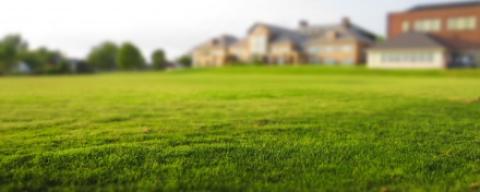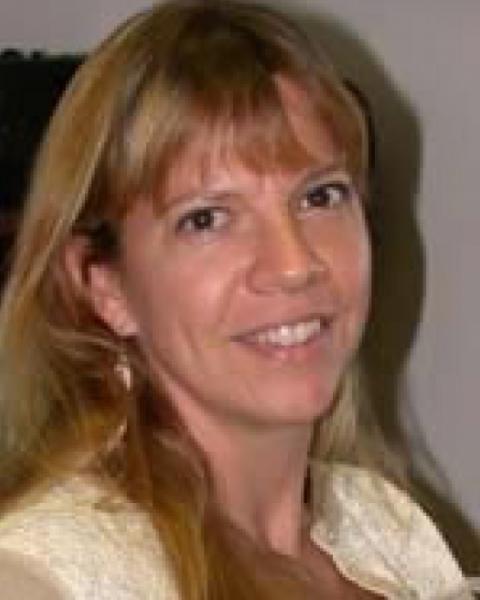Water quality friendly lawn care and fertilizer recommendations for northern New England
According to a recent survey, it’s likely that you and your neighbors believe having a lawn that is safe for the environment is very important.1 However, some lawn care practices can create water quality problems. Plants need nutrients to grow, but excess nutrients (including nitrogen and phosphorous found in fertilizers) that run off our properties into local waterbodies can trigger algal blooms that cloud water and rob it of oxygen. Many of us enjoy the time we spend working on our lawns and are willing to try new practices as long as our lawns continue to look good.1 Here are some easy practices for creating and maintaining a truly healthy lawn that is both attractive and safer for the environment.
Simple Recommendations for Every Lawn
1. Choose the Right Grass Seed
Consider limiting lawn area to locations where grass will grow easily and will actually be used for outdoor activities. Choose grass varieties that require less maintenance. For northern New England, choose seed mixes with higher percentages of turf-type tall fescues, compact-type tall fescues and/or fine fescues. Choose mixes with smaller percentages of Kentucky bluegrass and/or perennial ryegrass. Overseed bare spots.
In shaded areas, select shade-tolerant turf grasses like fine-leaf and tall fescues. Up to 10% of total seed mix can be white clover to help fix nitrogen in soil naturally. Avoid clover if anyone in the household is allergic to bee stings.
2. Don’t Overwater
1” of water per week (from rain or irrigation) is usually enough. Overwatering can cause excess nutrients to move out of the root zone and into waterbodies or groundwater.
3. Test Your Soil
To have your soil tested, please visit this site: extension.unh.edu/programs/soil-testing-services. Sometimes adjusting the soil pH or organic matter are the only treatments needed to improve a lawn. If your soil test results are acceptable but your lawn is not, check for other problems like pests, grass variety, or sun/shade conditions.
4. Mow Smart
Mow grass no shorter than 3” high. Cut no more than one-third (1/3) of the blade each time you mow to encourage longer, stronger roots. Leave the clippings after mowing so they can return nutrients to the soil. NEVER dispose of clippings in drainage areas, storm drains, or waterbodies!
Recommendations for Lawns that Need Fertilizer
1. Determine How Much to Apply
Measure the dimensions of the area where you plan to apply. The square footage of the area will determine how much fertilizer to purchase and use. Only use what you need. Nearly half of homeowners mistakenly use the entire bag whether it is needed or not.1 Seal and store opened fertilizer bags in an airtight container or share excess with others. Lawns older than 10 years usually need less nitrogen than newer lawns, especially if the clippings are left, so apply only half of the amount directed on the bag. Only apply more if there’s no improvement over time in turf color and density. Staying under four applications per season at this reduced rate helps keep the overall application at the recommended level2 for water quality friendly practices. Lawns less than 10 years old may need the full amount of nitrogen as indicated on the fertilizer instructions. Apply less than four times per year.
2. Know When & Where to Apply
Avoid applying fertilizers mid-summer when turf growth naturally subsides or before a big rain when it can run off into nearby waterways or leach into ground water. In northern New England, apply no earlier than spring green-up and no later than mid-September to ensure the proper soil temperature for grass to take up the nutrients. Know your local and state laws related to fertilizer application. For example, do not apply any fertilizers within 25 feet of water bodies in New Hampshire.
3. Choose the Right Fertilizer
Avoid combination products that include both pesticide and fertilizer unless confident you need both. Unnecessary applications of fertilizers and pesticides can lead to soil and water contamination. Select lawn fertilizers with low or no phosphorus unless your soil test indicates otherwise. The fertilizer formula (e.g., 20-0-15) tells the relative percentages of nitrogen (N), phosphorous (P) and potassium (K), in that order. Slow release formulations (>50% water insoluble nitrogen, “WIN”) are generally preferable. Only use quick release products when there is a need to grow turf very quickly, for example, to prevent erosion of bare soil during a new seeding. Check the product label to see what type of nitrogen it contains.
Organic fertilizers are typically slow release and contain micronutrients that are beneficial to soil. They are not petroleum-based like most synthetic fertilizers. Overapplying any type of fertilizer or over-irrigating fertilized turf can lead to water quality problems.
1Survey references from:
Changing Homeowner’s Lawn Care Behavior to Reduce Nutrient Losses in New England’s Urbanizing Watersheds: the Report of Findings from Social Science Research. Eisenhauer, B.W. and B. Gagnon. 2008.
USDA CSREES project # 2006-51130-03656
2Recommendations adapted from:
New England Regional Nitrogen and Phosphorus Fertilizer and Associated Management Practice Recommendations for Lawns Based on Water Quality Considerations. 2008. Karl Guillard (ed.). Turfgrass Nutrient Management Bulletin B-0100. College of Agriculture and Natural Resources, University of Connecticut.
USDA CSREES project # 2006-51130-03656.
This material is based upon work supported by the National Institute of Food and Agriculture, U.S.
Department of Agriculture, under Agreement No. 2006-51130-03656. Any opinions, findings, conclusions, or recommendations expressed in this publication are those of the author(s) and do not necessarily reflect the view of the U.S. Department of Agriculture.
Updated April 2019 (A. Brickett)

